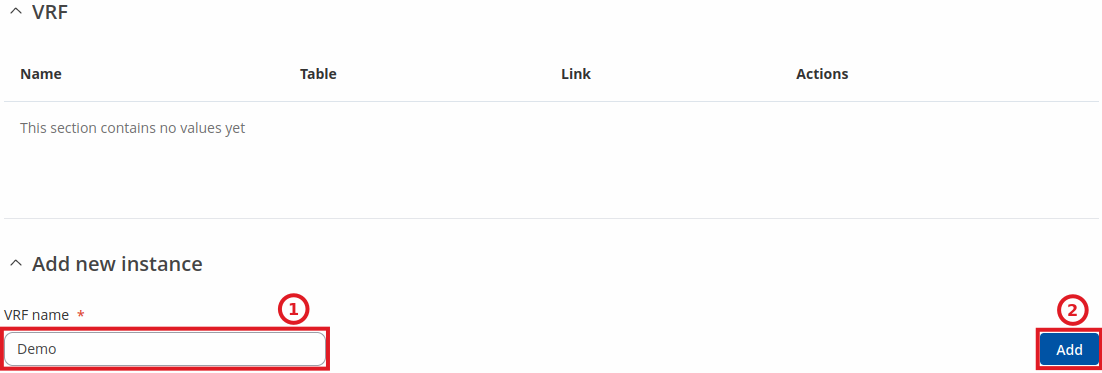Difference between revisions of "Template:Networking rutos manual vrf"
(No difference)
| |
Latest revision as of 14:31, 24 April 2024
The information in this page is updated in accordance with firmware version .
Summary
Virtual routing and forwarding (VRF) is a technology included in Internet Protocol (IP) network routers that enables multiple instances of a routing table to exist in a virtual router and work simultaneously.This functionality increases connectivity by enabling network paths to be segmented without using multiple devices. VRF acts as a logical router. But, while a logical router may include many routing tables, a VRF instance uses only a single VRF table.
Note: Internet status is additional software that can be installed from the System → [[{{{name}}} Package Manager|Package Manager]] page.
If you're having trouble finding this page or some of the parameters described here on your device's WebUI, you should turn on "Advanced WebUI" mode. You can do that by clicking the "Advanced" button, located at the top of the WebUI.
VRF
The VRF page is used to set up VRF instances.
To add a new instance - enter 'VRF name' below to the Add New Instance section and click 'Add' button:
After clicking 'Add' you will be redirected to the newly added VRF instance configuration page.
VRF configuration
| Field | Value | Description |
|---|---|---|
| Enable | off | on; default: off | Turns VRF instance on or off. |
| Table | integer [1..253 - 255..4294967295]; default: none | Unique routing table. 253-255 range is reserved for the default routing tables. |
| Link | physical interface; default: none | Devices which will be used for routing and forwarding. |
[[Category:{{{name}}} Network section]]


